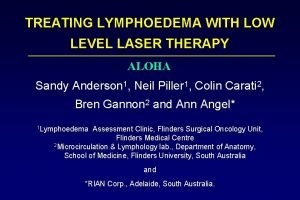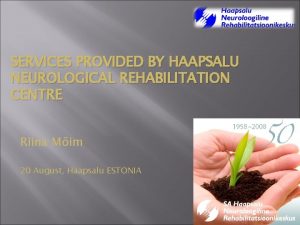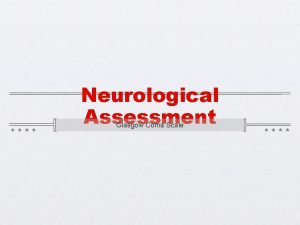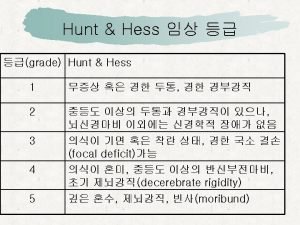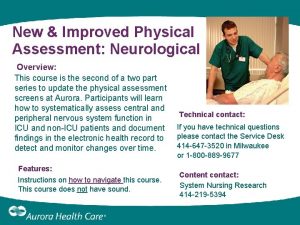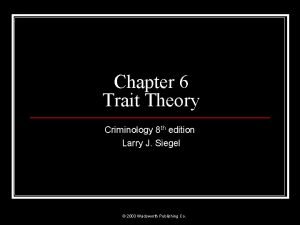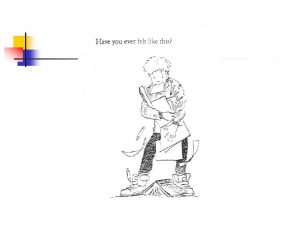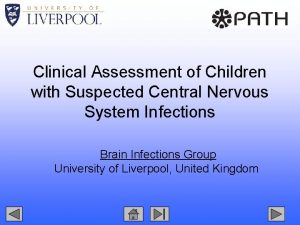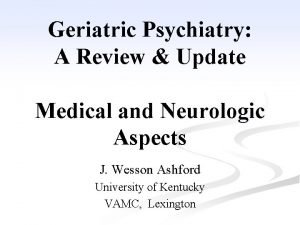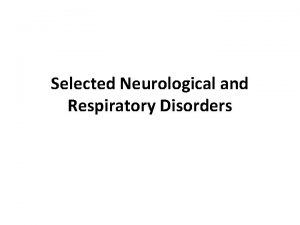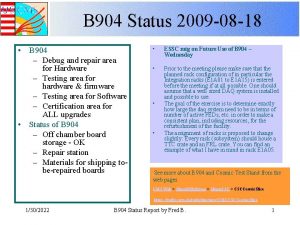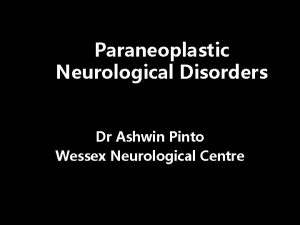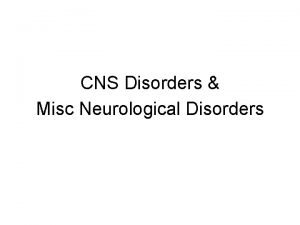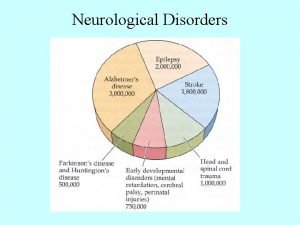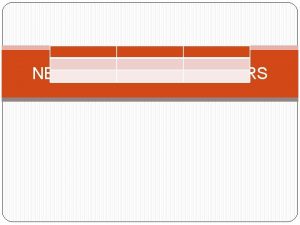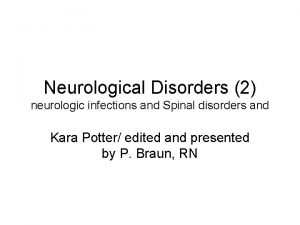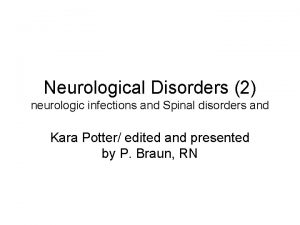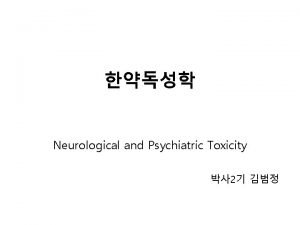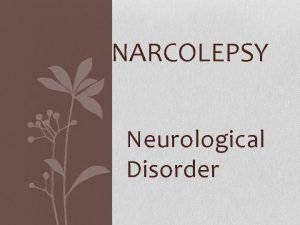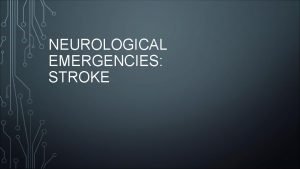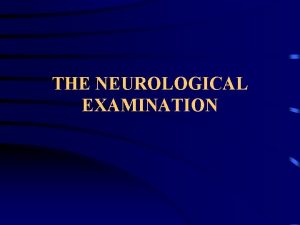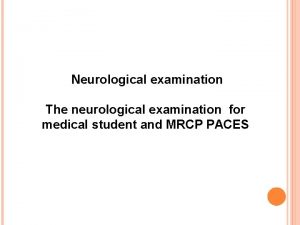NEUROLOGICAL DISORDERS PART II Chapters 43 pages 904

















- Slides: 17

NEUROLOGICAL DISORDERS PART II Chapters 43 (pages 904 -910) and 44 MRS. APRIL PAGE, MSN ARNP FNPC GULF COAST STATE COLLEGE NUR 1213 C INTERMEDIATE ADULT CARE

CARE OF PATIENTS WITH PROBLEMS OF THE CENTRAL NERVOUS SYSTEM: THE SPINAL CORD CHAPTER 43: MULTIPLE SCLEROSIS

DESCRIBE THE PATHOPHYSIOLOGY, CLINICAL MANIFESTATIONS, AND MEDICAL AND NURSING MANAGEMENT OF MULTIPLE SCLEROSIS, MYASTHENIA GRAVIS, AND GUILLAIN-BARRE’ SYNDROME. LESSON OBJECTIVE NINE

AUTOIMMUNE NEUROLOGIC DISORDERS Multiple sclerosis (MS) Myasthenia gravis Guillain-Barré syndrome

MULTIPLE SCLEROSIS A progressive immune-related demyelination disease of the CNS Clinical manifestations vary and have different patterns Frequently, the disease is relapsing and remitting; has exacerbations and recurrences of symptoms, including fatigue, weakness, numbness, difficulty in coordination, loss of balance, pain, and visual disturbances Medical management Disease-modifying therapies; interferon -1 a and interferon -1 b, glatiramer acetate (Copaxone), and IV methylprednisolone Symptom management of muscle spasms, fatigue, ataxia, bowel and bladder control

PROCESS OF DEMYELINATION

MULTIPLE SCLEROSIS CT SCAN AND MRI

TYPES AND COURSES OF MULTIPLE SCLEROSIS

MYASTHENIA GRAVIS Autoimmune disorder affecting the myoneural junction Antibodies directed at acetylcholine at the myoneural junction impair transmission of impulses Manifestations Myasthenia gravis, a motor disorder Initially symptoms involve ocular muscles; diplopia and ptosis Weakness of facial muscles, swallowing and voice impairment (dysphonia), generalized weakness

MYASTHENIA GRAVIS (CONT’D) Normal ACh receptor site in myasthenia gravis

MEDICAL MANAGEMENT Pharmacologic therapy Cholinesterase inhibitor: pyrostigmine bromide (Mestinon) Immunomodulating therapy Plasmapheresis Thymectomy

CARE OF PATIENTS WITH PROBLEMS OF THE PERIPHERAL NERVOUS SYSTEM CHAPTER 44: GUILLIAN-BARRE’, MYASTHENIA GRAVIS, RESTLESS LEGS, DISEASES OF THE CRANIAL NERVES

MYASTHENIC CRISIS Result of disease exacerbation or precipitating event, most commonly a respiratory infection Severe generalized muscle weakness with respiratory and bulbar weakness Patient may develop respiratory compromise failure CHOLINERGIC CRISIS Caused by overmedication with cholinesterase inhibitors Severe muscle weakness with respiratory and bulbar weakness Patent may develop respiratory compromise and failure

MANAGEMENT OF MYASTHENIC CRISIS Patient education in signs and symptoms of myasthenic crisis and cholinergic crisis Ensuring adequate ventilation; intubation and mechanical ventilation may be needed. Assessment and supportive measures Measures to ensure airway and respiratory support ABGS, serum electrolytes, I&O, and daily weight If patient cannot swallow, nasogastric feeding may be required Avoid sedatives and tranquilizers

GUILLAIN-BARRÉ SYNDROME Autoimmune disorder with acute attack of peripheral nerve myelin Rapid demyelination may produce respiratory failure and autonomic nervous system dysfunction with CV instability Most often follows a viral infection Manifestations are variable and may include weakness, paralysis, paresthesias, pain, and diminished or absent reflexes, starting with the lower extremities and progressing upward; bulbar weakness; cranial nerve symptoms; tachycardia; bradycardia; hypertension; or hypotension

GUILLAIN-BARRÉ SYNDROME (CONT’D) Medical management Requires intensive care management with continuous monitoring and respiratory support Plasmapheresis and IVIG are used to reduce circulating antibodies Recovery rates vary, but most patients recover completely

THE END NEUROLOGICAL DISORDERS PART II
 Printed pages vs web pages
Printed pages vs web pages Riancorp ltu-904
Riancorp ltu-904 Jumlah mol dari 3,01 x 1022 atom besi adalah
Jumlah mol dari 3,01 x 1022 atom besi adalah 903 904
903 904 Er 904
Er 904 Villa fridheim haapsalu
Villa fridheim haapsalu Neurological observations glasgow coma scale
Neurological observations glasgow coma scale Wfns grading
Wfns grading Neurological considerations in language acquisition
Neurological considerations in language acquisition Neurological assessment chart
Neurological assessment chart Neurological disease
Neurological disease Neurological based behavior
Neurological based behavior Neurological assessment chart
Neurological assessment chart Biochemical theory criminology
Biochemical theory criminology Is adhd a neurological disorder
Is adhd a neurological disorder Amy lee plastic surgery
Amy lee plastic surgery Muscle power neurological examination
Muscle power neurological examination Neurological examination
Neurological examination

